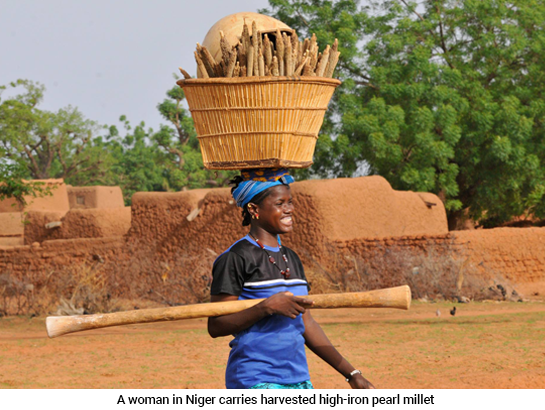Because of its ability to grow well in dry soil, millet has been a staple food crop for low-income families in Africa and Asia for thousands of years. Until recently, this cereal was primarily consumed by the rural families growing it. Now, women farmers are taking their processing knowledge to small enterprises in cities—establishing the crop’s value chain and increasing its popularity.
In a video interview, Ousmane Badiane, Africa director at the International Food Policy Research Institute, reflects on the historical journey pearl millet has taken, in celebration of a milestone: the increasing availability of a new high-iron variety of pearl millet called chakti.
Scientists at the International Crops Research Institute for the Semi-Arid Tropics collaborated with HarvestPlus to breed the high-yielding and extra nutritious variety. For millions of women and children in Africa, anemia is a significant public health concern limiting cognitive and physical potential; diets deficient in iron are often to blame.
“Making an already nutritious food more nutritious is incredible,” Badiane says of the crop biofortification effort. “Having that in Africa is the beginning of what I think is going to be having a huge impact on the nutrition of folks, not just rural areas but also in urban centers where millet is being consumed more.”
